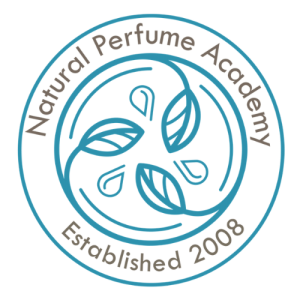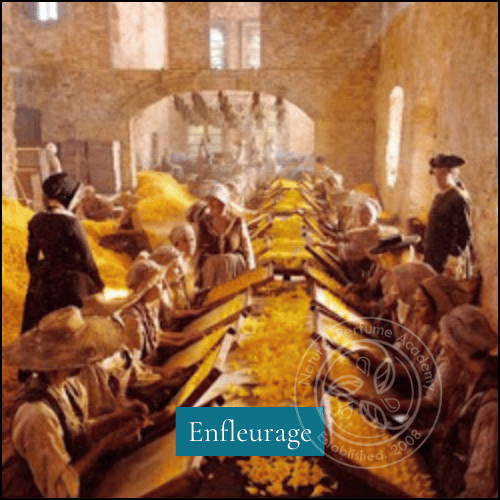Natural Perfume Academy Main Glossary

Welcome to the Natural Perfumery Glossary
The Natural Perfumery Glossary is a comprehensive public resource designed for all natural perfumers, whether you're a seasoned professional or just beginning your journey. This glossary serves as an educational tool, offering detailed definitions and insights into a wide range of natural perfume materials and terms.
Our entries cover various aspects crucial to the art and science of natural perfumery, including:
- Description and Characteristics: Detailed profiles of natural ingredients, including their origins, extraction methods, and unique olfactory qualities.
- Blending Suggestions: Insights into what other materials a particular ingredient pairs well with, helping you create harmonious and well-rounded compositions.
- Usage and Applications: Practical advice on how to incorporate each ingredient into your perfume creations.
- Safety and Regulatory Issues: Important information on the safe use of materials, including any relevant regulatory considerations.
At the Natural Perfume Academy, we are committed to fostering a deep understanding of natural perfumery through education and certification. Our glossary is a testament to this commitment, providing a valuable reference to support your ongoing learning and mastery of natural perfume making. Explore the glossary to enhance your knowledge and craft exquisite, all-natural fragrances with confidence.
Special | A | B | C | D | E | F | G | H | I | J | K | L | M | N | O | P | Q | R | S | T | U | V | W | X | Y | Z | ALL
E |
|---|
Enfleurage | ||
EssenceTitle: EssenceIn perfumery, essence refers to the concentrated aromatic oils extracted from natural raw materials such as flowers, fruits, spices, woods, and resins. These essences are the fundamental building blocks used by perfumers to create fragrances. Each essence contributes its unique scent profile, ranging from floral and fruity to woody and spicy, ensuring diversity and complexity in perfume compositions. Extracted through various methods such as distillation, expression, and enfleurage, essences form the core ingredients that define the character and quality of natural perfumes. | ||
Essential OilTitle: Essential OilEssential oils are volatile aromatic compounds extracted from botanical sources through processes like distillation or cold-pressing. These oils capture the characteristic scents and therapeutic properties of plants, making them prized ingredients in natural perfumery and aromatherapy. Steam Distillation: This method involves passing steam through plant material in a closed system. The steam causes the release of essential oils from the plant cells, and upon cooling, the mixture separates into water and essential oil, with the oil floating on top. Expression (Cold-Pressing): Used primarily for citrus fruits such as lime, bergamot, and orange, this technique involves mechanically pressing the rind of the fruit to extract the essential oil. Unlike steam distillation, expression does not involve heat, preserving the delicate aroma of citrus oils. Essential oils vary widely in scent and therapeutic properties, providing natural perfumers with a diverse palette to create fragrances that range from citrusy and fresh to floral and woody. | ||
ExpressionTitle: ExpressionExpression is a method used to extract aromatic materials, specifically essential oils, from plant sources, primarily citrus peels. Unlike steam distillation, which uses heat and steam, expression involves mechanical pressure to squeeze out the volatile oils contained in the rind or peel of fruits. Process: Citrus fruits such as oranges, lemons, and bergamots are commonly processed using expression. The fruit peel is mechanically pressed to rupture the oil-containing glands, releasing the essential oil along with some of the fruit's aromatic compounds. The resulting oil is then collected and used in natural perfumery, cosmetics, and aromatherapy. Expression is favoured for citrus oils because it preserves the fresh, vibrant aroma of the fruit without exposure to heat, which can alter or degrade the delicate citrus scent. This method ensures that the extracted oils retain their true fragrance and therapeutic properties, making them valuable ingredients in fragrance compositions and other applications. | ||
ExtraitTitle: ExtraitExtrait, also known as extrait de parfum or pure perfume, represents the highest concentration of scent in perfume making. It typically contains between 15% to 30% perfume composition blended with alcohol or another diluent. Characteristics: Extrait is revered for its rich and intense fragrance profile, offering a potent olfactory experience that lingers on the skin for an extended period. Due to its high concentration of aromatic compounds, only a small amount is needed to achieve a lasting scent, making it one of the most luxurious and long-lasting forms of fragrance. Application: Extrait is often preferred for special occasions or evening wear, where its deep, complex notes can unfold and evolve over time. Its luxurious nature and high concentration make it a coveted choice among perfume enthusiasts and connoisseurs. Production: The production of extrait involves meticulous blending of essential oils, absolutes, and other aromatic ingredients with a carefully measured amount of alcohol or diluent. This meticulous process ensures that the final product maintains its intensity and integrity. | ||
F |
|---|
FixativeTitle: FixativeFixatives are natural materials or compounds used in perfumery in small quantities (typically 1% to 3%) to enhance the longevity and stability of a perfume composition on the skin. These substances help to anchor the volatile aromatic components, slowing their evaporation and extending the overall duration of the fragrance. Types of Fixatives:
Function: Fixatives work by binding to the skin and slowing the evaporation rate of the more volatile fragrance components. This helps the perfume to linger longer and maintain its character throughout the day. Application: Perfumers carefully select fixatives based on their ability to complement the overall fragrance and enhance its longevity. The choice of fixative can significantly influence the final scent profile and performance of a perfume. Natural Origins: In natural perfumery, fixatives are derived from botanical sources, aligning with the tradition of using natural materials to create luxurious and enduring fragrances. | ||
FlaconTitle: Flacon:A flacon refers to a bottle, typically crafted with delicate or ornate design elements, specifically used for storing perfumes. These bottles are often designed to enhance the aesthetic appeal of the fragrance they contain and may feature intricate decorations or elegant shapes. Flacons are generally equipped with tight-fitting stoppers or caps to preserve the fragrance from evaporation and oxidation. Origins: The term "flacon" originates from the Old French word "flagon," which historically referred to a container for liquids, particularly wine or perfume. Over time, it evolved specifically to denote a perfume bottle, emphasising its importance in the presentation and preservation of fragrances. Characteristics: Flacon bottles vary widely in size, shape, and material, ranging from small, portable vessels to larger, decorative containers. They are designed not only to hold perfume but also to showcase the craftsmanship and artistry associated with perfumery. Importance: Beyond functionality, flacons serve as collectors' items and symbols of luxury, often adorned with intricate detailing, engravings, or labels that reflect the brand identity and the essence of the fragrance they hold. Usage: Perfumers and fragrance houses carefully select flacons to complement the aesthetic and sensory experience of their perfumes, ensuring that the design harmonises with the fragrance's story and target audience. Cultural Significance: Throughout history, flacons have symbolised elegance, refinement, and the art of perfumery, making them prized possessions and desirable gifts in both personal and ceremonial contexts. | ||
Flat NoteTitle: Flat NoteIn perfumery, a flat note refers to a fragrance component that lacks vibrancy, depth, or complexity. It is characterised by its dull or uninspiring quality, often perceived as lacking liveliness or distinctiveness within a perfume composition. Characteristics:
Causes:
Perfumer's Perspective:
Evaluation:
Enhancement:
| ||
Floralflower based composition | ||


